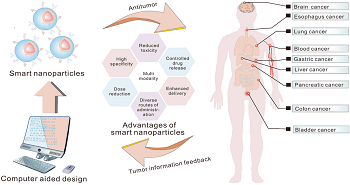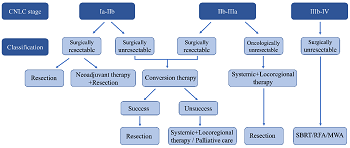Research Article
Objective: Helicobacter pylori is a major cause of gastric cancer. This study aimed to determine the frequency of clarithromycin resistance and its association with point mutations in the 23S rRNA gene.
Methods: This study was conducted on 100 patients with gastric disorders who were referred to Valiasr Hospital in 2022. Two biopsy samples were obtained from each patient for pathological and microbiological examinations. Antimicrobial susceptibility testing was performed using the agar dilution method, and polymerase chain reaction (PCR) was used for molecular analysis.
Results: Among the patients, 53% (53/100) were diagnosed as H. pylori-positive. Pathological findings indicated that 54.7% (29/53) of the H. pylori-positive patients had chronic gastritis, 37.7% (20/53) had severe active gastritis, and 7.5% (4/53) had intestinal metaplasia. Clarithromycin resistance was detected in 13.2% (7/53) of the patients. The MIC50 and MIC90 values were determined to be 0.125 mg/L and 2 mg/L, respectively. PCR results revealed that the A2142G point mutation in the 23S rRNA gene was present in all clarithromycin-resistant strains.
Conclusions: Our findings indicate that the presence of the A2142G point mutation in the 23S rRNA gene may be associated with clarithromycin resistance in H. pylori strains. These results underscore the importance of routine screening for resistance genotypes to guide effective treatment strategies.
A Knowledge-Based Planning model for IMRT in breast and lung cancer
Objective: The advent of Knowledge-Based Planning (KBP) models has introduced a transformative approach to Intensity-Modulated Radiation Therapy (IMRT) treatment planning in breast cancer and lung cancer cases. This paper explores the application of KBP models to these specific cancer types, highlighting their potential to enhance treatment accuracy, efficiency, and patient outcomes.
Methods: By leveraging historical treatment data and machine learning techniques, KBP-IMRT offers a data-driven framework for optimizing dose distributions, minimizing radiation exposure to healthy tissues, and improving overall treatment plan quality.
Results: Through a comprehensive review of the literature and clinical case studies, this paper underscores the advantages of KBP-IMRT, such as streamlined planning processes and improved plan consistency, while acknowledging the challenges associated with model development and implementation.
Conclusion: As the field of radiotherapy continues to evolve, KBP models hold the promise of shaping the future of personalized and precise cancer treatment strategies.
Deep learning based capsule networks for breast cancer classification using ultrasound images
Purposes: Breast cancer (BC) is a disease in which the breast cells multiply uncontrolled. Breast cancer is one of the most often diagnosed malignancies in women worldwide. Early identification of breast cancer is critical for limiting the impact on affected people's health conditions. The influence of technology and artificial intelligence approaches (AI) in the health industry is tremendous as technology advances. Deep learning (DL) techniques are used in this study to classify breast lumps.
Materials and Methods: The study makes use of two distinct breast ultrasound images (BUSI) with binary and multiclass classification. To assist the models in understanding the data, the datasets are exposed to numerous preprocessing and hyperparameter approaches. With data imbalance being a key difficulty in health analysis, due to the likelihood of not having a condition exceeding that of having the disease, this study applies a cutoff stage to impact the decision threshold in the datasets data augmentation procedures. The capsule neural network (CapsNet), Gabor capsule network (GCN), and convolutional neural network (CNN) are the DL models used to train the various datasets.
Results: The findings showed that the CapsNet earned the maximum accuracy value of 93.62% while training the multiclass data, while the GCN achieved the highest model accuracy of 97.08% when training the binary data. The models were also evaluated using a variety of performance assessment parameters, which yielded consistent results across all datasets.
Conclusion: The study provides a non-invasive approach to detect breast cancer; and enables stakeholders, medical practitioners, and health research enthusiasts a fresh view into the analysis of breast cancer detection with DL techniques to make educated judgements.
Review

Pages 248-253
Skin toxicities related to targeted therapy and immunotherapy for non-small cell lung cancer
Non-small cell lung cancer (NSCLC) is the most common cancer, causing death and disability. Targeted therapy and immunotherapy have had an increasing role in the management of patients with advanced NSCLC. These treatments can produce an excellent curative effect, but the side effects should not be ignored. Skin toxicities such as papulopustular eruption, severe desquamation, and paronychia have a high incidence, seriously affecting patients’ quality of life and even interrupting treatment. Early recognition and adequate management are critical to prevent exacerbation of the lesions. This review describes the common skin toxicities related to targeted therapy and immunotherapy for NSCLC, summarizes the updated research progress of the mechanism, and proposes appropriate treatment and counseling for optimized management.
Nanotherapeutics to cure inflammation-induced cancer
Aims: Nanotherapeutics are being explored as a potential solution to treat inflammation-induced cancer. Nanotherapeutics enhance innate immune cells' immunity, enabling them to fight tumors effectively. These cells secrete specific chemicals like cytokines, allowing them to replicate quickly and respond to future threats, making them suitable for immunotherapy.
Methods: Nanotechnology can significantly improve human health by enhancing infection detection, prevention, and treatment. Nanomedicines, composed of restorative and imaging compounds in submicrometer-sized materials, aim to deliver effective treatments and limit inflammation in healthy body areas. Combining nanotechnology and clinical sciences, nanoparticles are suitable for gene therapy and have been developed for treating various diseases, including cancer, cardiovascular, diabetes, pulmonary, and inflammatory diseases.
Results: Neutrophils and their offspring, including films and extracellular vehicles, are crucial drug transporters for enhanced growth therapy. Tumor microenvironment inputs can modify tumor-associated neutrophils (TANs), which are essential for tumor growth and healing. Human tumor intratumor heterogeneity is crucial for tumor growth and healing. Nanomedicines have shown potential in targeted delivery, toxicity reduction, and therapeutic effectiveness enhancement. However, clinical relevance and efficacy remain inadequate due to a lack of understanding of the interaction between nanomaterials, nanomedicine, and biology. The diverse biological milieu impacts the dynamic bioidentity of nanoformulations, and their interactions can modify therapeutic function or cellular absorption.
Conclusion: Nanotechnology holds great promise for improving human health by detecting, preventing, and treating infections. Nanomedicines, a fusion of clinical sciences and nanotechnology, use submicrometer-sized transporter materials for therapy delivery and reducing contamination. Nanoparticles' small size and high surface-to-volume ratio can benefit gene therapy. Research has led to a wide range of nanomedicine products globally.
Commentary
Surgical resection is still the most important radical treatment for primary hepatocellular carcinoma (HCC), but at present, the resection rate of newly diagnosed patients with HCC is only 30%. The recurrence rate of newly diagnosed patients suitable for surgical resection within 5 years after surgery is as high as 40%~70%. Low initial resection rate and high postoperative recurrence rate are important reasons restricting the overall treatment effects of HCC in China. Under this background, effectively improving the resection rate of HCC and reducing the postoperative recurrence rate have become the key topics to improve the treatment effects of HCC. Some initially unresectable HCC patients may have access to surgery through conversion therapy. Conversion therapy, which mainly involves the combination of local, systemic, and multiple treatment strategies, offers hope for patients with advanced HCC. But there are still some patients who do not benefit from conversion therapy. So, how to improve the conversion success rate is still one of the challenges that clinicians need to solve.



 Alireza Ahmadzadeh, Zhaleh Mohsenifar, Behzad Hatami, Ali Pirsalehi, Mostafa Rezaei-Tavirani
Alireza Ahmadzadeh, Zhaleh Mohsenifar, Behzad Hatami, Ali Pirsalehi, Mostafa Rezaei-Tavirani




